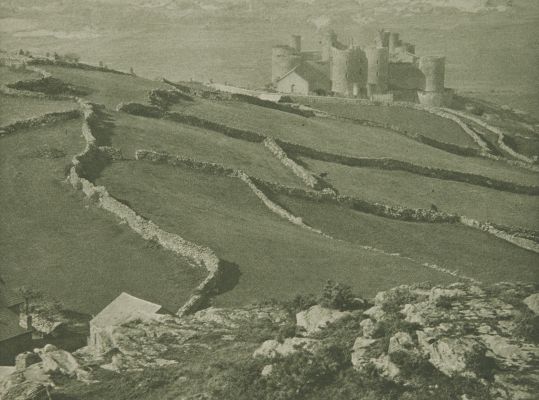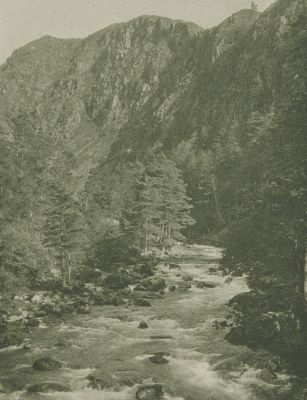
Title
Plate IV Harlech Castle from the WestArtist
Coburn, Alvin Langdon (American, 1882-1966)Key FigurePublication
The Book of HarlechDate
1920Process
MezzogravureImage Size
11.8 x 15.8 cmSheet Size
13.2 × 17.3 cm
A beautiful example of the Mezzogravure process. Often confused with photogravure, mezzogravure uses intaglio engraving and a supplement of special machinery, such as rotogravures or sheet-fed mechanized gravure, by which prints can be produced rapidly and at a lower cost than traditional photogravure.
Between 1906 and 1909 Coburn was in London learning the photogravure process at the London School of Photo-Engraving. He was a keen advocate of the use of photogravure and someone who relished the quality of a well-designed and finely printed book incorporating photographs. His early books, for which he made the dust-grained copperplate photogravures himself, include London (1909) and New York (1910). After moving to Britain in 1912, he was to publish several others including Men of Mark (1913), More Men of Mark (1922), Moor Park Rickmansworth (1915 – mezzogravure) and this title, The Book of Harlech (1920).
The Book of Harlech envisions Coburn’s celebration of this otherworldly Welsh village of Harlech to which he and his wife fled from London where he moved after visiting his friend Kodak managing director George Davison there in 1916. After publishing The Book of Harlech in 1920, Coburn all but retired from photography.
Reproduced / Exhibited
The Phillips Collection Object Number 2008.012.0005
References
Harker, Margaret. The Linked Ring: the Secession Movement in Photography in Britain, 1892-1910. London: Heinemann, 1979. p. 148











